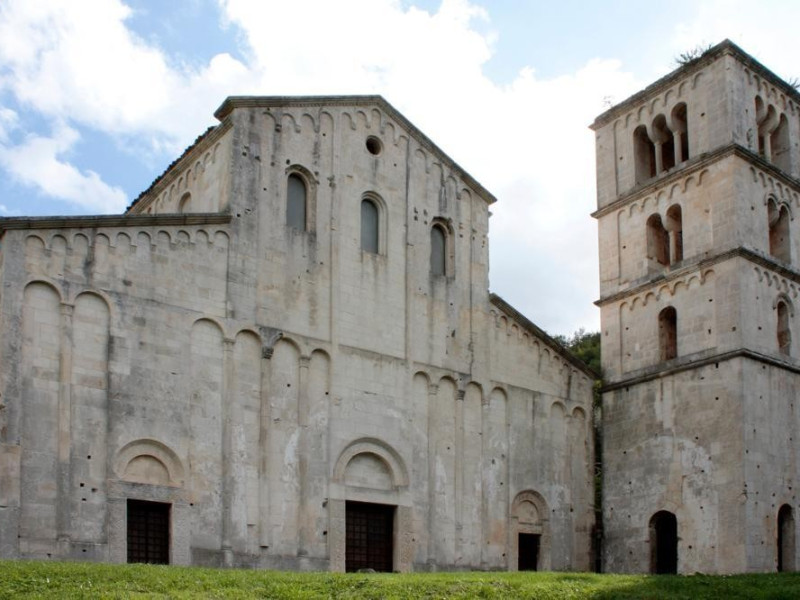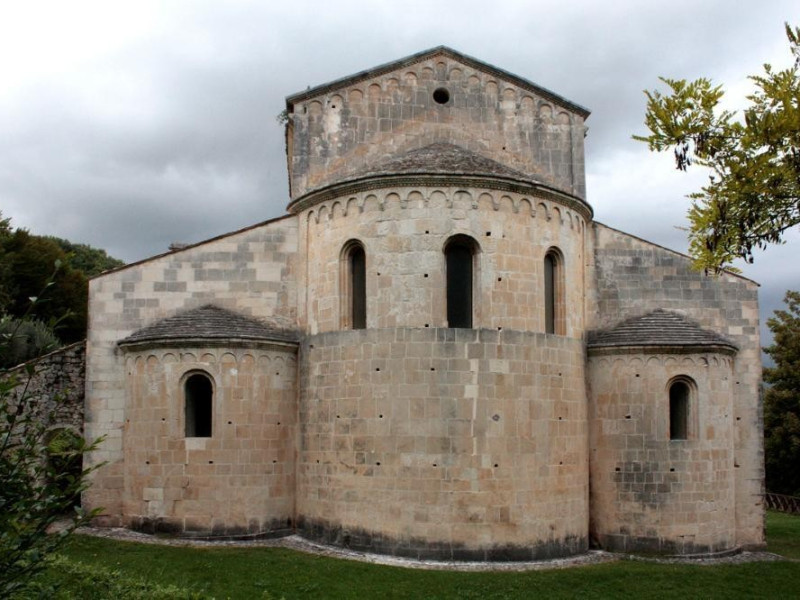Luogo - Religious building
ABBAZIA DI SAN LIBERATORE A MAJELLA
Where
Via per la Badia di San Liberatore a Majella, Serramonacesca (Pescara)
The origins of the Benedictine monastery are enveloped in mystery. According to an old legend two Roman patricians donated to Saint Benedict himself resources for the construction of the religious area; another legend connects the event to Charlemagne's victory over the Longobard army in 781. The king himself would have ordered to build the monastery upon the battlefield. A community of monks had certainly settled in the place around 884, when the abbot Bertario wrote his Memoratorium (records) about Montecassino's properties in the area of Chieti. After an earthquake in 990, which almost razed the monastery to the ground, the abbot Tebaldo, designated in 1007, started a phase of reconstruction and enlargement of the buildings around and of the church, which was embellished with altars and paintings. The renovation continued when Desiderio was elected abbot of Montecassino in1058. San Liberatore's long history is marked by long-lasting disputes about the property of several possessions of the monastery. At the beginning of the nineteenth century the area appears abandoned and its revival began only in 1958-9, when a substantial and questionable restoration were set to bring the church back to its original aspect. The front of the church - the only extant part of the monastery, along with the belfry - is noteworthy for its gabled-façade with three portals interposed attributed to the abbot Desiderio (eleventh century) and to the Angevin age. The plan of the church is based on a nave and two aisles, concluding in the three apses visible on the back. The most notable item of the interior is undoubtedly a pulpit, whose twelfth-century bas-relief has been restored.


